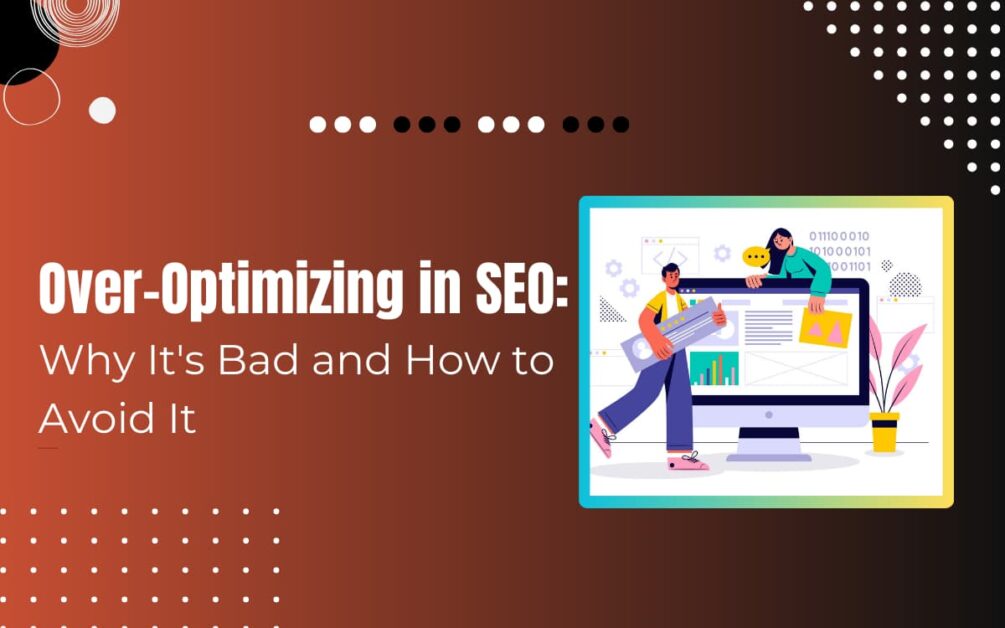Reading Time: 8 mins 15 sec
In this article, we will discuss the 21 best SEO metrics to track.
In brief,
21 Top SEO Metrics to Measure SEO Performance:
- Return On Investment (ROI)
- Keyword Rankings
- Organic Traffic
- Conversion Rates
- Market Share
- Backlink Profile
- Social Signals
- Mobile Responsiveness
- Dwell Time
- Page Authority and Domain Authority
- SERP Features
- User Engagement Metrics
- Exit Pages
- Pages per Session
- Indexing Status
- Keyword Cannibalization
- Page Speed Insights
- Competitor Analysis
- Content Performance
- Local SEO Metrics
- Customer Lifetime Value (CLTV)
In today’s digital era, where Google processes over 8.5 billion searches daily, having a strong online presence is important.
Research indicates that 93% of online experiences begin with a search engine.
Making search engine optimization (SEO) and organic marketing essential for driving traffic and generating high-quality leads for your website.
During an economic downturn, when marketing budgets are tight and competition is high, investing in organic marketing becomes even more critical.
Neglecting your organic marketing efforts can result in losing valuable traffic and sales to competitors who are actively working on their online visibility.
Understanding the value of organic marketing is one thing.
But finding which strategies are truly effective can be challenging.
SEO experts often overpower business leaders with an array of metrics, making it difficult to determine what is working and what isn’t.
To cut through the noise and gain meaningful insights, let’s explore the top 21 SEO metrics that hold the most significance in evaluating your digital presence’s impact on your business.
So let’s get started
Read This: 3 Technical SEO Tips For Multilingual Websites
Why Tracking SEO Metrics is Vital for Success
In the digital time frame, where competition for online visibility is tough, tracking SEO metrics is basic for success.
By monitoring these metrics, you gain valuable insights into your website’s performance, identify areas for improvement, and make data-driven decisions to enhance your overall SEO strategy.
Neglecting to track SEO metrics can lead to missed opportunities, ineffective campaigns, and loss of organic traffic.
So ultimately dive into these metrics to find solutions to all your basic questions.
21 Best SEO Metrics To Track
Return On Investment (ROI)
ROI serves as a measure of your marketing channels’ effectiveness, and organic marketing tenure is supreme when it comes to attracting customers cost-effectively.
On average, SEO delivers a remarkable 748% ROI compared to a minor 36% for pay-per-click ads.
It’s crucial to discover the misconception that organic traffic is entirely “free.”
While no media dollars are spent, investing in SEO strategies and techniques, such as an organic marketing platform, is necessary to measure results accurately and determine where to allocate your efforts.
When calculating ROI for your marketing channels, remember to account for media expenses, SEO strategies, and technology to obtain a comprehensive measure of each channel’s effectiveness.
Keyword Rankings
Keyword rankings reveal your website’s visibility on SERPs for specific search terms.
They provide a measurable way to assess how well your business is being found online.
Ranking higher for relevant keywords increases your site’s visibility, leading to a higher likelihood of conversions.
In fact, data from 2023 suggests that the top result on a SERP typically receives a click-through rate of 39.8%, more than double that of the second position (18.7%), and 10.2%, which is almost four times the rate for third place.
In short, the lower your ranking for a keyword, the less likely searchers will find you.
Gaining prominence for specific keywords improves brand recognition and increases website traffic.
To make sure you are focusing on the terms that are most relevant to your business, check your ranking development.
Sometimes even subtle variations in search terms, such as “inexpensive vacations” versus “cheap vacations,” can significantly impact customer intent.
Additionally, monitoring keyword rankings uncovers opportunities to target niche keywords with high search volume and low competition.
Organic Traffic
Organic traffic represents the number of users who discover your website naturally through search engine result pages (SERPs).
Monitoring your organic traffic statistics allows you to measure the effectiveness of your SEO strategy.
Higher organic traffic indicates increased engagement with your content, increasing revenue growth, and building brand awareness.
To gain deeper insights, analyze both branded traffic (users specifically searching for your brand) and non-branded traffic (users seeking information but not yet familiar with your brand).
This breakdown helps you understand how effectively you’re expanding your reach through your content.
By identifying which content attracts the most visits, you can assess any gaps that may exist in your current website content.
Read This: How Does SSL Certificate Validation Work?
Conversion Rates
The percentage of site visitors who complete the desired activity, such as filling out a form, requesting a demo or free trial, or making a purchase, is measured by conversion rates.
Understanding your conversion rates plays an important role in making content strategy decisions, as they indicate whether your content effectively meets customer needs.
Identifying the content that drives the highest conversions empowers you to optimize your website to better cater to your audience.
If you have substantial traffic but low conversions, there is likely a disconnect between your content and customer intent.
It’s crucial to revisit your content strategy and build bridge any gaps to improve conversion rates.
Market Share
In the digital field, the proverb “keep your enemies close” holds true.
By closely monitoring market share, you can gain valuable insights into your competitive landscape and identify areas where your digital presence lags behind.
Tracking market share enables you to identify competitors who are excelling and develop strategies to protect your own market share, traffic, and revenue.
Increased consumer trust, brand awareness, loyalty, and repeat business are all benefits of having a larger market share in addition to increased traffic and conversions.
Backlink Profile
Backlinks play a significant role in SEO, as they indicate the credibility and authority of your website.
By tracking your backlink profile, you can identify the quantity and quality of incoming links.
Analyze your link-building efforts, and devise strategies to attract high-quality backlinks from authoritative sources.
Social Signals
Social signals, such as likes, shares, and comments on social media platforms, can indirectly influence your website’s SEO performance.
By tracking social signals, you can evaluate the impact of your social media marketing efforts, identify popular content, and engage with your audience effectively.
Mobile Responsiveness
With the increasing prevalence of mobile devices, mobile responsiveness is a crucial SEO metric to track.
Google considers mobile-friendliness as a ranking factor, and a mobile-responsive website provides a good user experience across different devices.
By monitoring mobile responsiveness, you can ensure your website is accessible and optimized for mobile users.
Dwell Time
Dwell time refers to the duration of time a user spends on your website after clicking through search engine results.
It is an important user engagement metric that can indirectly impact your website’s rankings.
By tracking dwell time, you can identify engaging content, optimize user experience, and improve search engine visibility.
Read This: New Generic Top-Level Domains List
Page Authority and Domain Authority
Page Authority (PA) and Domain Authority (DA) are metrics developed by Moz that predict the ranking potential of a web page or domain.
By monitoring PA and DA, you can gauge the overall strength and authority of your website, compare it with competitors, and identify opportunities for improvement.
SERP Features
SERP (Search Engine Results Page) features, such as featured snippets, knowledge graphs, and local packs, can significantly impact your website’s visibility and click-through rates.
By tracking SERP features, you can identify opportunities to optimize your content for enhanced visibility and capture valuable ranking on search engine results.
User Engagement Metrics
User engagement metrics, including time on site, pages per session, and scroll depth, provide insights into how users interact with your website.
By tracking these metrics, you can measure user satisfaction, identify areas for improvement, and optimize your website’s design, content, and navigation.
Exit Pages
Exit pages indicate the last pages visited by users before leaving your website.
By analyzing exit pages, you can identify potential issues or bottlenecks in your conversion funnel, optimize content, and enhance user experience to reduce exit rates.
Pages per Session
By tracking this metric, you can evaluate how engaging your content is, identify popular pages, and optimize internal linking to encourage deeper exploration of your website.
Indexing Status
Indexing status refers to the number of pages from your website that search engines have indexed.
By tracking indexing status, you can ensure that your website’s pages are discoverable and accessible to search engines.
If you notice a decline in indexing, it may indicate technical issues or crawlability problems that need to be addressed.
Keyword Cannibalization
Keyword cannibalization occurs when multiple pages on your website target the same keyword, leading to confusion for search engines and a dilution of ranking potential.
By identifying instances of keyword cannibalization, you can consolidate content, optimize page relevance, and improve keyword targeting for better rankings.
Page Speed Insights
Page speed is a crucial factor that affects both user experience and search engine rankings.
By utilizing tools like Google’s Page Speed Insights, you can evaluate your website’s performance, identify areas for improvement, and optimize page speed to enhance user satisfaction and search engine visibility.
Read This: 7 Tips For Achieving Successful SEO Engagement
Competitor Analysis
Competitor analysis allows you to benchmark your website’s performance against your competitors in terms of rankings, keywords, backlinks, and other SEO metrics.
By analyzing your competitors, you can identify their strengths and weaknesses, discover new opportunities, and fine-tune your SEO strategy accordingly.
Content Performance
Tracking content performance metrics, such as page views, time on page SEO, and social shares, provides insights into how your content resonates with your target audience.
By analyzing content performance, you can identify top-performing content, replicate success, and refine your content strategy to attract more organic traffic.
Local SEO Metrics
For businesses targeting a specific geographic location, tracking local SEO metrics is essential.
These metrics include local keyword rankings, online reviews, local listings, and Google My Business (GMB) performance.
By monitoring local SEO metrics, you can enhance your online visibility in local search results and attract targeted customers in your area.
Customer Lifetime Value (CLTV)
By understanding CLTV, you can assess the long-term value of your customers, prioritize marketing efforts, and tailor your SEO strategy to attract high-value customers.
Read This: 29 Best Youtube Channel To Learn SEO
Conclusion
In this article, we will discuss the 21 best SEO metrics to track.
Investing in SEO and organic marketing is crucial for your business’s growth.
By understanding the core SEO metrics—ROI, organic traffic, market share, conversion rates, and keyword rankings—and how they drive awareness, consideration, traffic, and conversions, you can position your company for increased sales and reduced costs.
Remember that measuring your metrics is the first step toward managing and improving them.
You can make data-driven decisions that advance your brand and produce long-lasting effects by concentrating on these crucial indicators.
If you like this article please share and comment.
Read Also
- Top 65 Technical SEO Interview Questions And Answers
- Does Bold Text Help SEO
- How To Create The Perfect H1 Tag For SEO
- Google Announces Five Changes Coming To Mobile Search
- Benefits Of Using Semrush
FAQ
What metrics should I track for SEO?
Organic traffic
Core Web Vitals
Click-through rate (CTR)
Top keywords ranked
Exit rate
Backlinks and referring domains
Pages per session
Average page load time
What is a good KPI for SEO?
Organic conversions, including sales, leads, subscriptions, and any other action that generates revenue for your company, are the most crucial SEO KPI.
How do I track my SEO performance?
Search rankings
Links
Bounce rate
Organic traffic
Organic CTR
Search Visibility
Search results
Branded traffic
Average session duration
What are 4 examples of key performance metrics to track?
Productivity
Profit margin
Scope
Cost
What 5 key metrics would you want to display on a data dashboard?
CTA – ClickThrough Rates
Traffic sources
Bounce rates
Social media reach
Progress to the goal (monthly or quarterly)
How do I choose metrics to track?
Good metrics measure progress
Choosing the right metrics
Good metrics can be improved
Good metrics inspire action
Good metrics are important to your company’s growth
What are the top 5 KPIs?
Profit margin
Customer satisfaction
Revenue per client
Revenue growth
Client retention rate



